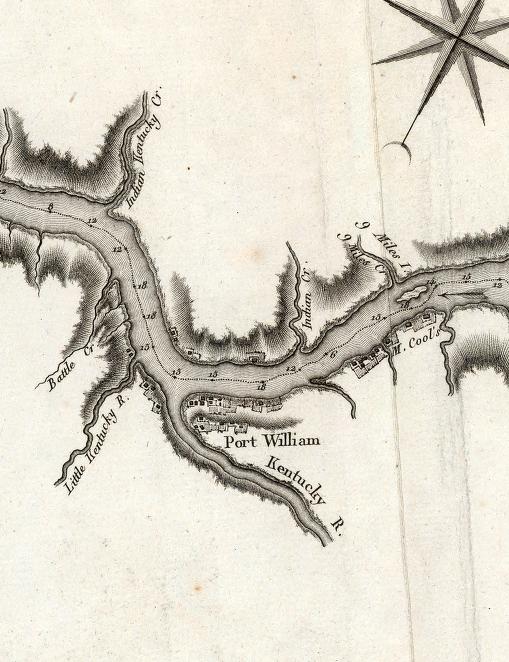No congregation of the Church of Jesus Christ of the Latter Day Saints was successfully established in Jefferson County until the 1960s. But it wasn’t for lack of trying.
It might be better to say no long-lasting congregation was established because there were efforts from very early in the history of the Mormon Church and these continued throughout the 1800s.The earliest record the church reports is the trip by two ministers, Reynolds Cahoon and Samuel Smith, brother of Joseph Smith, who set out for Missouri in June 1831. Along the way, they stopped in Kentucky and preached in Madison, Vienna and Unionville, although no details were given about these appearances.
Next, in the winter of 1832/33, Simeon Carter organized an L.D.S. branch in Hanover, which had 27 members, according to the April 1833 edition of the Evening and Morning Star, a Mormon publication. But no further record of that effort has been found. After that, there is a gap of 20 years of reported church activity in Jefferson County. At a conference in Nauvoo, Ill., held on April 6, 1843, Joshua Holman and John Pierce were appointed as missionaries of Madison. Holman died in 1849, having returned to Nauvoo, and Pierce was not listed in the 18500 Jefferson County census.
What happened next is unclear with only hints given about Mormon activity from records of the Reorganized Church of Latter Day Saints. (They did not call themselves Mormon and the denomination changed its name to Community of Christ in 2000.) At some point a Swiss immigrant, Louis Van Buren of Manville had become an L.D.S. member. This is known because by 1861, he had joined the reorganized church whose Saints Herald said Van Buren had visited the denomination’s headquarters in Lamoni, Iowa. It reported that “Elder Louis Van Buren, of Manville, Jefferson county, Ind., tarried in this city several days. He is a believer in the New Organization, and I am informed that he was an elder in the Old Organization. He is on his way to
The presence of Mormons probably drew the Reorganized Church into Jefferson County for organizing efforts that began in the 1870s with much greater success than the Mormons had achieved.
An 1878 letter by the Rev. James Scott, who spearheaded this activity along with his brother the Rev. John Scott, mentioned that, “There are a great many more of the old saints throughout the county,” but gave no other details. Few of these are known, including, the Rev. William Marshall is known, as a Madison newspaper account said he had been a Mormon, and had been excommunicated by the R.L.D.S. because he believe in polygamy. (In the twentieth century, he was a Baptist and preached at the Mt. Pleasant Baptist Church in Shelby Township.)
The Scotts began their evangelizing by Dec. 7, 1872 when James wrote he had procured a house of preaching. This was probably at Wirt where on June 27, 1873, following 20 days of meetings held by the Scotts, four Madisonians joined the Union Branch which met at the Union School House two and a half miles from Wirt. These included “Brother Woodburn and his wife” who were described as members of the old church. On July 2, 1873, the Daily Courier reported Union Branch had 26 members. James Scott’s 1878 account said the branch began with 10 members under elder Samuel Rector and minister (called a priest) William Blair. By March, 10, 1876, Union had 33 members. By 1883, it was reportedly considering purchase of the Christian Church building in Lancaster. Whatever it did, Union Branch moved into its old building by Nov. 9, 1884, when the Saints Herald reported its church building had been dedicated. This was probably the one building reported for the denomination in Jefferson County by the 1890 census.
There were also attempts to found a congregation in Madison. The May 15, 1873 Saints Herald, noted that Elders were wanted at
While no other records of the Smyrna congregation have been found, more is known about the Mt. Pleasant Branch, which met on the Milton Township of Hall’s Ridge. It was organized on Oct. 13, 1879 with 22 members and conferences of the Reorganized church’s Southern Indiana District were held on Nov. 20, 1879 and March 5, 1881. Since the R.L.D.S. had only one structure in the county in 1890, Mt. Pleasant probably did not have its own building until after the congregation purchased land in 1894. But the church did not last long and in 1904, the property was soon and the new own demolished the building.
By 1900, the L.D.S. itself was ready for one for effort in Jefferson County. Madison’s 1900 census showed Hugh Harvey, Jessie Pay, Isaac Zundel, and Erick Larsen boarding at 204 East Street. All four, born in

